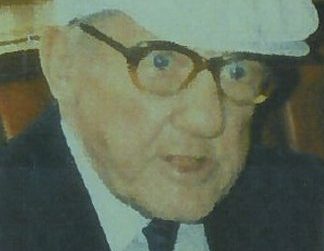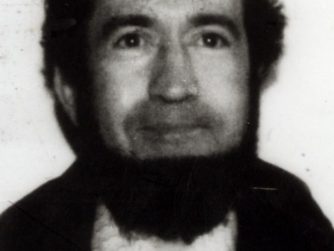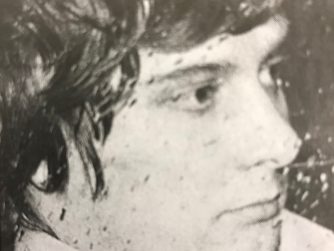“These were atrocious and vicious killings. Someone must have an overwhelming load of guilt on their conscience.” – Dr Richard Whittington (Coroner – speaking at inquest in August 1988)
It is exactly 29 years ago that a vicious and cowardly murderer shocked the city of Birmingham by carrying out a horrific double murder. The victims were two elderly sisters, Alice and Edna Rowley, whose lives were senselessly taken in a brutal murder that netted the killer a haul consisting of nothing more than a few petty items. The crime is still unsolved, and police hope that someone out there still has vital information that can bring this monstrously evil killer to justice.

Alice and Edna Rowley had run their shop on the corner of Greswolde Road, Sparkhill, for more than 50 years, and were familiar figures in the neighbourhood, driving their old Morris Minor back and to from the local cash and carry. They were known for their charitable and kindly nature, often giving out free sweets to local children and regularly giving donations to local causes. Alice and Edna were creatures of habit, opening very early in the morning and remaining open throughout the day, so, when on December 23rd, 1987, the shop that stood at 94 Greswolde Road remained closed by the mid-morning, neighbours were concerned. The sisters were both elderly; perhaps one of them had taken ill or had had an accident? Concerned neighbours who failed to get any response from knocking eventually contacted police.
When police arrived, officers forced their way into the sister’s home, and found a site so tragic and shocking that it shook hardened officers. In the small downstairs living room, Alice was found lying on the floor. Edna was found lying in her bedroom. Both were clearly dead, Alice having ligature marks visible around her throat, and Edna having severe bruising around her eyes. Post-mortems later determined that 87 year old Alice had been strangled with a scarf or a towel, although it was never found, and 77 year old Edna had been beaten and smothered to death. All that had been taken were two boxes of chocolates, a bottle of Tia Maria, a battered brown leather suitcase, and a radio cassette player. The chocolates and alcohol were the sister’s Christmas presents to one another.
Initial inquiries revealed that the sisters had last been seen alive the previous evening at 6:45pm, and had probably been killed not long after closing the shop for the evening. The initial thought of police was that they had interrupted a burglary in progress. But this theory was dispelled with a closer examination of the scene. An untouched meal lay on the dining table, and there were no signs of forced entry to the shop or upstairs premises. It appeared as though the sisters had been about to sit down to an evening meal when the killer had struck. Had he conned his way in on pretence, or had the kindly sisters invited someone knocking on their door in, as they had a habit of?

Over 100 police were drafted in from across Birmingham as the subsequent murder investigation began in earnest, with house to house enquiries carried out in the surrounding area. A search of the shop and living area was carried out to determine if anything else had been taken, or any forensic evidence had been left behind by the killer. The sister’s backgrounds and lives were looked at to determine if there was anyone with a possible motive for harming them. Police left no stone unturned in one of Birmingham’s biggest ever manhunts, making more than 5,000 individual inquiries and taking more than 1,600 statements. Every male living in the surrounding area was fingerprinted. The crime sickened police so much that a £10,000 reward for information leading to the arrest of the killer was offered. This was a first of its kind for the force.
“We certainly have not personally offered a reward before and I cannot recall any other police force taking this step. However, this outrageous offence demands that we consider all avenues of investigation and assistance.I earnestly ask the public, including members and associates of the criminal fraternity to examine their consciences, consider the nature of the killings and report their suspicions.” Asst Chief Constable Tom Meffen (speaking in 1987)
But police didn’t have much to go on. The search of the premises revealed no forensic evidence, blood traces, footprints or unidentified fingerprints, and a murder weapon was never found. An item that was found, however, was an empty packet of Walkers Bitza Pizza crisps. This was found lying at the bottom of the stairs – and it was established that these type of crisps were not sold in the shop. Had the killer brought them with him? The origin of the packet has never been explained. House to house enquiries also revealed very little – no sounds of struggle or screams were heard, and no one was seen leaving the scene. The sisters were found to have been well liked, were well known, and were very well respected in the local area. They had no immediate family and neither had ever married, all they had was the shop, and each other. They were described as independent and from a generation that was hard working, proud and brave. Evidence to this effect is that on a previous occasion, Alice had been confronted by an armed robber in the shop, but had struck him with a broom and caused him to flee. The sisters were the type to have a go, not cower.
House to house enquiries early in the new year did, however, give police one possible lead. A neighbour living near the shop who had been abroad over Christmas came forward to police upon hearing about the murder when he returned to the area early in the new year. The neighbour reported that on December 22nd, he had seen a “scruffy looking” man, “like a vagrant”, knocking on the door of the shop at about 7:30pm. This would have been just after the shop had closed. Crucially, the man was knocking on the internal glass door of the shop and not the outer one. This same man was seen at the same time by a woman walking towards the shop. The witnesses described the man as being middle aged, with grey streaked greasy hair, and was wearing a grey or brown jacket with dark trousers. An artist’s impression was created and was widely publicised locally and nationally. Enquiries were made at hostels, night shelters and places frequented by down and outs, but this “vagrant” never came forward, and was never traced. Who was he? The artist’s impression is shown below:

When all avenues of enquiry had been followed up and exhausted, the incident room was scaled down – although the case has never and will never be closed. It has been re-appealed on numerous occasions over the years, including several times on Central television and the subject of a Crimewatch UK reconstruction. But nobody has as yet been brought to justice for this cowardly murder.
What then can be said about the killer? Unfortunately, it is almost impossible to determine anything for certain. There is scarce information available about the crime, so to build up a picture of the killer depends largely on hypothesis. I am led to believe that this is not the first crime committed by this man – it is a level of offending reached rather than started at. It does not appear to have been a planned murder either – perhaps more spur of the moment? For example – the offender may have conned his way in on pretence, or pretended to have been ill even, planning to then steal in a distraction burglary? He may have been caught in this act by one of the sisters, then panicked – and took the most drastic action possible and killed both? Neither of the sisters had been sexually assaulted, so sex can be discounted as a motive, and there is no suggestion that either sister had any enemies, or were involved in anything illegal or immoral – this leaves robbery as a motive. But why only take such paltry items? There is no record of any money having been taken – in a shop where there would more than likely be a cash float. Just some Christmas presents were taken. This suggests that robbery became an afterthought – and that the murder of the two sisters was unplanned. This is furthered by the method of murder – strangulation. It is a very spur of the moment method, and all points to a robbery going horribly wrong, and the killer just grabbing items to hand before fleeing, panicking after having killed two elderly women. This theory gains credence by the fact that police discovered that this had actually happened a few weeks before. A bogus water board official had called at the shop a few weeks previously, and had got as far as the kitchen before being exposed as an imposter – although how this was ascertained is not revealed. Was this connected – were the sisters targeted again by the same person? The bogus water official was never traced either.
It is also important not to base the sole picture on the artist’s impression, although difficult because it is the only lead police have to go on, and the fact that any man matching the description was never traced nor came forward to clear themselves makes this man the prime person of interest. But it should not be stated with certainty that this is the face of the killer – the man could have been innocently asking for directions somewhere, and had chosen a shop because of its focal point of knowledge of the local area. He could have been someone known to the sisters. He may even not have recognised himself from the artist’s impression, or he may not have even been a local man – perhaps a traveller passing through, or a long distance delivery or lorry driver. He is either an important potential witness, or he may of course, be the killer. But either way he has never been traced, and if this man appeared middle aged in 1987, then he would be elderly himself now. If he is even still alive of course. So the artist’s impression is largely rendered useless today.
With no suspects, no forensic evidence and no leads, the investigation has remained inactive for many years now. It has frustrated detectives who have examined every piece of evidence and theory available, and have examined any possible links with other unsolved crimes throughout the UK. None have been definitively linked however. The shop itself no longer exists now, instead an Islamic Cultural and Education Centre stands on the site where it was.
94 Greswolde Road – as it appears today
The murder of Alice and Edna Rowley is still unforgotten in the community where they once lived though, and the unsolved crimes are periodically reviewed by specialist teams of cold case detectives, who urge anybody with information to get in touch to help. Sadly, it is likely that barring a deathbed confession or someone’s conscience getting the better of them, that that information will not be forthcoming, and that the killer will escape justice for this despicable crime.
Anyone with information can call police on 101, or the Crimestoppers charity anonymously on 0800 555 111.
The True Crime Enthusiast




I really enjoyed reading this well written and engaging account of a case unknown to me. I look forward to more….Adam